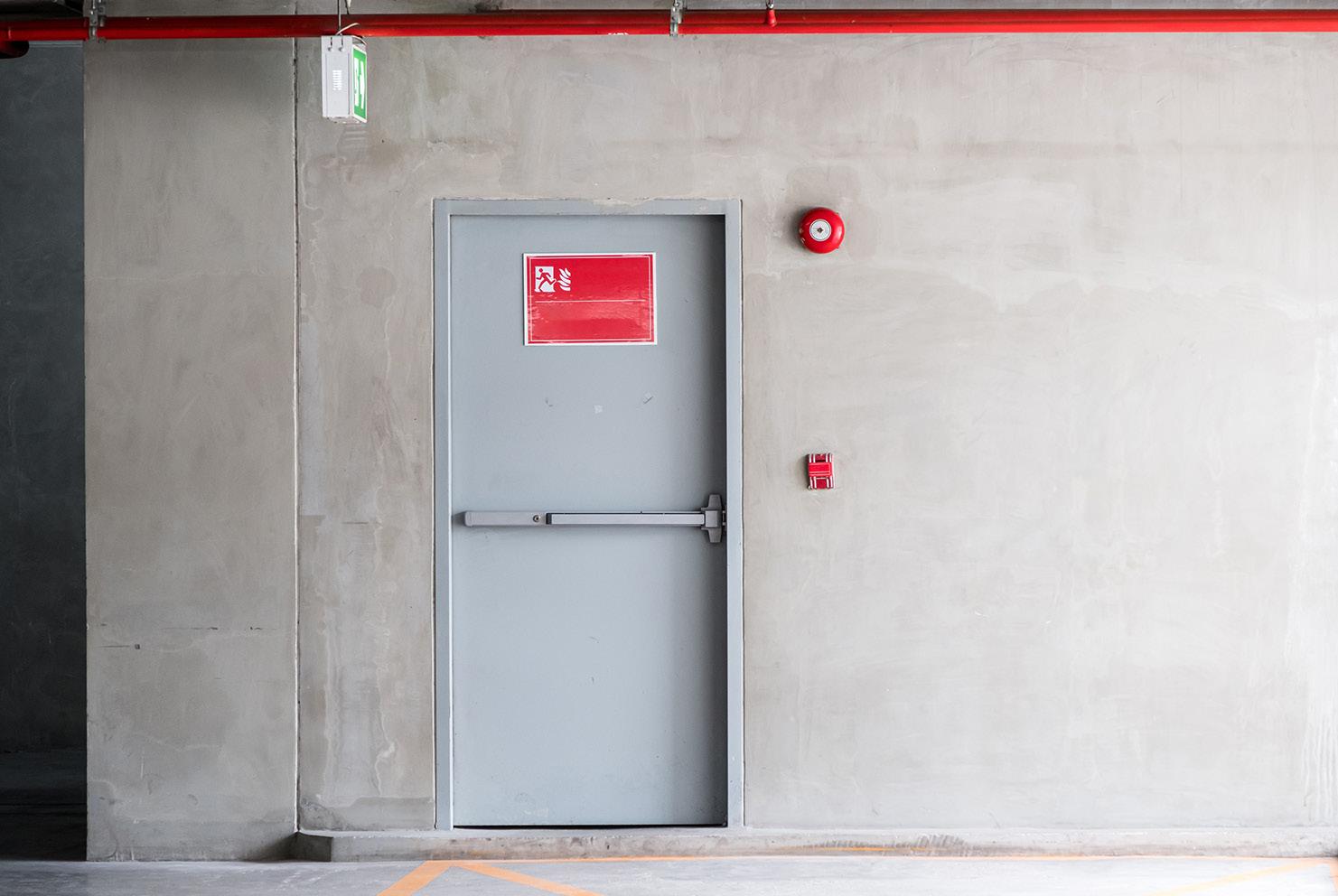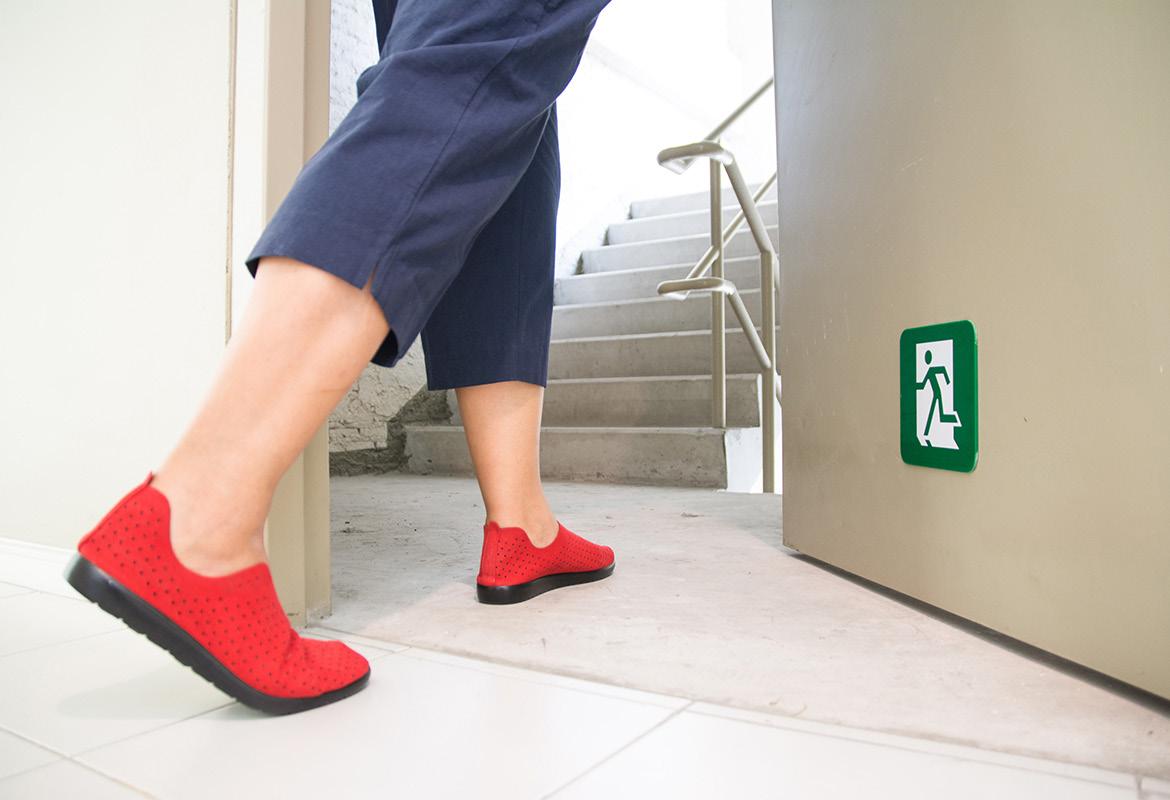
9 minute read
Emergency evacuation from workplaces for people with disability
from Access Insight - Summer 2021
by ACAA
by Hank Van Ravenstein MRICS
Hank is a Principal with LCI Consultants, being a highly experience and accomplished building regulatory, fire safety, risk management access and equitable professional and is also a chartered surveyor, with an outstanding track record of performance in government agencies and private sector companies, including as an independent consultant and regulatory specialist. He has published many papers on Fire Safety, Evacuation and Regulatory compliance as well as presented numerous papers at multiple national and state industry events over his 35 year career. Contact: hank.vanravenstein@lciconsultants.com.au
Based on 2020 Australian Bureau of Statistics [ABS] data, Australia’s population numbered 25,687,041 as of 30 June 2020 (1) . Considering the 2018 statistics on the number of persons with disability being 17.7% (2) of the population, there are over 4.5 million persons with disability in Australia. Based on the 2018 ABS percentage figures for working age, there are 2.14 million people with disability and of that 53.4% are in the workforce, being 1.15 million people with disability.
Lessons learnt from the devastating loss of life in the World Trade Centre [9/11] (USA) and high-rise accommodation fires at Grenfell Tower fire (3) (UK) have shown deficiencies in the design and construction where evacuation is required by occupants who cannot negotiate exit stairs without assistance or are not sprinkler protected. Issues like these need to be addressed in any planning for buildings and workplaces. The challenge is when implementing fire safety and other emergency procedures into their safe work practices.
ARE THE CODES UP TO DATE?
It is commonly assumed that compliance with the Deemed-to-Satisfy (DtS) provisions of the National Construction Code Series Volume One (BCA) is sufficient to achieve a satisfactory level of performance and safety. However, it needs to be understood that except for access considerations, the DtS provisions have been largely written around people without disability.
Modern office building designs are generally multi-storey, having mixed occupancies, such as retail, childcare centres and residential accommodation, not to mention public open spaces. With buildings being constructed that provide for people with disabilities easier access in, the question arises, has emergency evacuation really been considered in the design?
Under State and Federal Legislation, it is unlawful to treat people with disabilities any less favourably than a person without disability, such as noted in Hall-Bentick (4) where Greater Union were held to have indirectly discriminated against the wheelchair-bound complainant by not providing wheelchair access in its cinemas. Therefore, it follows that it is the responsibility of those who have control of or have safety and compliance obligations to ensure that arrangements are in place for safe and timely evacuation of all occupants in the building in an emergency.
A typical example is the minimum width of an exit path (corridor) in the BCA is 1.0 m, whilst AS 1428.1–2009, clause 6.5.1, states that ‘the circulation space required for a wheelchair to make a 60° to 90° turn shall be not less than 1500 mm wide and 1500 mm long in the direction of travel. This space may be splayed across the internal corner as shown in Figure 1 below, taking into account the 90th percentile-based footprint for an occupied wheelchair as detailed AS1428.1 – 2009 (5).
In some buildings, the width of the corridor (egress path) does not consider the circulation space required for people using a wheelchair. Whilst this is a minimum defined in the Australian Standards, taking the dimensions relevant to the 90th percentile based on the findings of research undertaken by Bails (6) in 1983. Since that time wheelchairs have evolved with the advantage of technology has result in them becoming larger, heavier whilst at the same time giving the users greater control over their mobility and freedom.
Whilst access design, in terms of undertaking a Performance Solution (7) is generally taken for a person who uses a wheelchair, there are other disabilities such as hearing, visual and mental impairments including a combination thereof that should also be considered.
Whilst the DtS requirements of the BCA, is lacking, it is picked up and addressed by the BCA in the Performance Requirements, DP4 (8), DP6 (9) and DP7 (10) in that you must consider ‘mobility and other characteristics of occupants’ and DP1 (11) access must be provided to ‘access work and public spaces. It is therefore important when designing a building that you consider, the type, occupant profile, use and type of building and holistically address all the requirements outlined in BCA Performance Requirements.
EMERGENCY EVACUATIONS
The safety of all people is of paramount importance, whether they are persons with or without disability and as such should not be discriminated against. All occupants need must be taken into account when designing and planning any building design, especially evacuation provisions. Whilst it is agreed that it not always possible to plan for every situation that may occur, in an emergency, like what happed at the Twin Towers of the World Trade Center (USA), it is possible to prepare for emergencies if designers understand their obligations and occupant characteristics.
Factors such as how person with disability are notified of a building emergency, an understanding of how will they respond to a potentially catastrophic event, what features or systems are provided to assist them during an emergency, and what planning and operational strategies are in place to help ensure “equal egress” will be provided during an emergency.
It is better to design buildings from a risk perspective so as to limit the likelihood of a serious fire event. This can be achieved through good holistic fire risk safety design coupled with proper maintenance regime of the fire safety systems. The design should also consider the movement of people with disability within and outside of the building (horizontal and vertical movement) and the development of an associated Emergency Management Plan, refer to Figure 2, that can be practically and efficiently implemented in the event of an emergency.


Figure 2 - Emergency Plan
WHAT CAN BE DONE?
Firstly, community expectations for the care of people with disability are continually rising, based on better education, knowledge and technical advancements and their integration into the mainstream workforce as it should be. Accountability of design engineers, building surveyors and regulators needs to be intensified through post incident analyses and industry design. Owners, developers, Regulators and design professionals must adopt a far more robust processes to justify their designs and approval processes, which is implicit in the DDA.
The Fire Engineering design needs to consider how evacuation models are used in the design process and its relationship to that of the performance-based design approach now being more widely used. In terms of the BCA and the relevant Australian Standards, they only establish the minimum requirements in the design of buildings. In most cases, there is a need for additional fire and life safety measures, to mitigate the complexity and the additional difficulties in firefighting, evacuation client characteristics and rescue operations during emergency evacuations.
EVACUATION REQUIREMENTS
Australian Standard AS3745-2010 (12) ‘Planning for emergencies in facilities’, is a framework to enhance the safety and welfare of people in facilities, Providing a framework for emergency planning, being that it applies only to the human/ life safety aspects of emergencies within facilities, implying that a number of other requirements need to be addressed for people with disability, not to mention the requirement of the DDA. For example, staff and visitors with a disability must be included in an organisation’s emergency planning; whilst there are some fire engineering reports referencing AS 3745, they do not go into detail on how it will impact or is incorporated in the final design and construction of the building.
The evacuation process of a high-rise building particularly for persons with disability is influenced by the characteristics and types of vertical egress provisions provided. With present day buildings are being constructed higher as well as having larger open spaces such as atriums, these factors need to be considered and assessed against the backdrop of the occupant’s demographics and characteristics.
Stair evacuations do present some significant problems for people with disabilities, in the literature studied, different evacuation problems have been analysed (13) such as the ability of the occupants to use stairs with or without an aid, its impact on the evacuation process for those that are assisting them (14), and the use of dedicated stair devices on the variability of the possible confusions on others using the stairs.
In planning and designing an emergency evacuation, it is all about planning for the unexpected, and people with a disability are no different from anyone else. Whilst there are procedures and requirements in place for most types of buildings, they are not always integrated with the original criteria of the Fire Engineering design. The purposely designed evacuation lifts, fire-fighting lifts and evacuation chairs, have special features and measures in place which could allow for their use in the event of fire. What needs to be understood is that persons with disability should not be required to wait for the main flow of people to leave the building before they are evacuated.
CONCLUSION
There are many complex issues associated with design for the evacuation of person with disability in emergencies of which fire is only but one; albeit it a very important one. It is therefore imperative that all stakeholders such as fire safety engineers,designers, building surveyors/certifiers including relevant Authorities, need to understand the requirements of people with disability or for that matter any person, is to ensure that they can be evacuated as safely and quickly as possible in a dignified and proper manner to safety in the event of an emergency.
1 https://www.abs.gov.au/statistics/people/population/national-state-and-territory-population/latest-release, viewed 19 January 2021.
2 https://www.abs.gov.au/statistics/health/disability/disability-ageing-and-carers-australia-summary-findings/latest-release, viewed 19 January 2021.
3 https://en.wikipedia.org/wiki/Grenfell_Tower_fire The Disability Discrimination Act 1992 (Cwth) (DDA) imposes duties on organisations and designers in how they are to manage the way emergency evacuations from workplaces and buildings of persons with disability is achieved in a dignified, non-discriminatory and safe manner.
4 Hall-Bentick v. Greater Union Organisation Pty. Ltd. (2000) EOC 93-107
5 Figure 1 (page 6) AS1428.1 – 2009
6 Bails, J. H., 1983. ‘Project Report of the Field Testing of Australian Standard 1428—1977.’ (Comprises a series of separate investigations). South Australian Department of Housing and Construction. (Now Housing SA)
7 Definitions in Schedule 3 National Construction Code 2019 Building Code of Australia Volume One.
8 Section D – National Construction Code 2019 Building Code of Australia Volume One, pages 121-122
9 Ibid
10 Ibid
11 Ibid
12 Originally Published by Standards Australia on 25 November 2010, Standards Australia is the nation's peak non-government, not-for-profit standards organisation.
13 Boyce KE, Shields TJ(1999) Towards the characterisation of building occupancies for fire safety engineering: capabilities of disabled people moving horizontally and up an incline. Fire Technol 35(1):51–67.
14 Shields TJ et al. 2009 – Fire Safety Journal 2009 – ‘The behaviour and evacuation experiences of WTC 9/11 evacuees with self-designated mobility impairments.











